Warwickshire
THE BARD ∗ HIS ANCESTORS ∗ HIS CHILDHOOD
∗ HIS MARRIAGE ∗ HIS RELIGION ∗ NEW PLACE
∗ GEORGE ELIOT ∗ FIRST LABOURING MP
Anne Hathaway’s Cottage, England’s most famous chocolate box cottage.
WARWICKSHIRE FOLK
William Sheldon ∗ Joseph Arch ∗ Sir Frank Whittle ∗ Richard Lindon ∗ Sir Joseph Lockyer ∗ John Wyndham
Meriden
The Warwickshire village of Meriden is reckoned to be the geographical centre of England, and the claim is marked by a stone cross. The village has a memorial to all cyclists who died in the Great War, and cyclists from all over England gather here once a year to pay tribute. Meriden was also home to Triumph Motorcycles from 1942 to 1983.
William Shakespeare
1564–1616
Warwickshire has been described as the most typically English of all the English counties, and so it is fitting that it should lie at the very centre of England and be the home county of the man who has contributed more to theEnglish language than any other, WILLIAM SHAKESPEARE.
Ancestors
William Shakespeare’s ancestors were Warwickshire farmers rooted in the farms and villages of the Forest of Arden, a wild area north of Stratford upon Avon. Shakespeare played and grew up in a forest landscape of trees and plants and animals, and this very English landscape forms the background to many of his plays, such as A Midsummer Night’s Dream and As You Like It.
Shakespeare’s family can be traced back to the 14th century, to Oldeditch Farm in Balsall, when the son of Adam of Oldeditch gave himself the name of Shakespeare, or Shakesper, which derives from military usage as someone who wields a spear. It was not an uncommon name in Warwickshire, possibly because many of the yeomanry and squires of the area had fought in the Wars of the Roses, a claim later made by William’s father John, when he applied for a coat of arms.
Birthday
William Shakespeare was born in Henley Street in Stratford, and we may still stand in the very room where he first opened his eyes. He was baptised in Holy Trinity Church on 26 April, and as it was the custom in Elizabethan England to have a child baptised three days after birth, William’s birthday is accepted as 23 April – St George’s Day.
Shakespeare’s birthplace
Childhood
He attended the Grammar School in Stratford, housed in a long, half-timbered building which has remained essentially unchanged since it was erected as the home of a religious guild in 1428. The schoolroom was upstairs, while below was the hall where William saw his first play. From a young age he would have mingled with the various acting companies that came to Stratford, as they would have had to apply for a licence to William’s father John when he was Mayor of Stratford.
Holy Trinity
At the age of 11 William went to see the pageantry surrounding Queen Elizabeth’s legendary visit to Robert Dudley at Kenilworth Castle, pageantry that he would later to recreate in many of his plays.
During the holidays Shakespeare would wander through the countryside visiting friends and relatives, including the Shakespeares of Packwood Hall with whom he would sometimes stay, and while there he got to meet the historian RAPHAEL HOLINSHED, who lived at nearby Packwood House. Holinshed was the author of the Chronicles of England and Scotland, the source for much of the material in Shakespeare’s history plays.
Marriage
When William was 18 he married ANNE HATHAWAY, who was 26 and three months pregnant. Anne lived in SHOTTERY, a small village about a mile (1.5 km) outside Stratford, and the path that William would have taken to visit the thatched cottage where she lived can still be followed. Inside, the cottage is furnished as it would have been in Shakespeare’s day.
William and Anne married in the church at TEMPLE GRAFTON in 1582. They chose here rather than Stratford to wed, because the priest at Temple Grafton was sympathetic to a Catholic form of marriage.
Religion
In the days of Elizabeth I the official religion of England was Protestant, and although Catholics were tolerated they were not popular, with the memory of Bloody Queen Mary’s persecutions still fresh and England under constant threat from Catholic France and Spain. The Forest of Arden was a strongly Catholic area and both William’s parents came from Catholic families, so it is reasonable to suppose that William was privately, if not overtly, Catholic.
Once married, William and Anne moved in to live with William’s parents in the house on Henley Street, and his first child Susannah was born there six months later. In early 1590 William began to write his first play, Henry VI Part I, and in 1592 he moved to London to try his hand in the theatre as an actor and playwright, leaving behind his wife and children in Stratford.
It has been suggested that Shakespeare fled to London after being caught poaching in the grounds of CHARLECOTE PARK, a magnificent Tudor pile east of Stratford, and got his revenge on SIR THOMAS LUCY, Charlecote’s owner, by portraying him as Justice Shallow in The Merry Wives of Windsor. It is more likely that the poet ridiculed Lucy, a local Justice of the Peace and prominent Protestant, for his harassment of Catholics in Warwickshire, and in particular for his part in the arrest and trial of Edward Arden, kinsman of William’s mother Mary Arden.
New Place
In 1597 Shakespeare returned to Stratford as a rich man and bought NEW PLACE, the second largest house in Stratford, and the only one made of brick. He retired there in 1610.
Gatehouse, Charlecote Park
William Shakespeare died in 1616 on 23 April, his 52nd birthday, apparently after a drinking session with Ben Jonson in the Falcon Inn at Bidford. He is buried in the chancel of Holy Trinity Church, where he had been baptised.
New Place was inherited by William’s daughter Susannah, and then passed to her daughter Elizabeth, who married the next-door neighbour Thomas Nash. The house was eventually purchased by a disagreeable parson called FRANCIS GASTRELL, who became so infuriated by people gawping over the wall that he went out into the garden one night and chopped down the mulberry tree that Shakespeare had planted, reducing it to a pile of logs. The inhabitants of Stratford were so incensed that they flung stones through Gastrell’s windows until, driven to madness by a tax demand, he finally lost his temper and razed the whole house to the ground. The eccentric clergyman was run out of town, and no one of that name may ever live in Stratford again. On the site of New Place there is now a replica of an Elizabethan knot garden.
George Eliot
1819–80
GEORGE ELIOT, one of the greatest English novelists, was born Mary Anne Evans at ARBURY FARM (now South Farm), set in the middle of the Arbury estate near Nuneaton, where her father was the estate manager for the Newdegate family. The farmhouse in which she was born is still there, lived in by the present estate manager. Mary was christened in the church at Chilvers Coton, where her parents are now buried, and grew up in nearby Griff House, which appears as Doricote Mill in The Mill on the Floss. It is now a hotel.
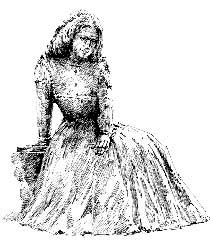
When her father retired to Coventry, Mary began to move in intellectual circles, and their lofty disdain caused her to reject her religious upbringing, much to her father’s bewilderment. After he died she moved to London, where she became editor of the Westminster Review, working under the first of her many assumed names, since editing was not considered women’s work. She also embarked on an affair with the philosopher Herbert Spencer, the founder of socialism, which she hoped might lead to marriage, but Spencer discarded her, commenting cruelly that she was too ugly. She then met the true love of her life, an already married man called George Henry Lewes, and they started to live together as husband and wife. He encouraged her to write and this she did, hiding behind the name George Eliot lest her scandalous live-in relationship with Lewes should affect how her books were received.
Two of her celebrated novels, Adam Bede and Middlemarch, are based on her early life in Warwickshire, and in much of her work she includes references to North Warwickshire locations she knew and loved as a child. Her novels are renowned for their pyschological insight and realism.
Well, I never  knew this
knew this
about
WARWICKSHIRE FOLK
William Sheldon
WILLIAM SHELDON WAS THE FIRST ENGLISH TAPESTRY MAKER. Through marriage, he inherited the Manor of BARCHESTON, near Shipston-on-Stour, and set up England’s first tapestry workshop in the manor house barn, in about 1560. He learnt the technique from Flemish weavers brought to England by his manager Richard Hickes, and Sheldon tapestries are now regarded as some of the finest in the world. Particularly sought after are his tapestry maps of English counties such as Warwickshire, Gloucestershire, Oxfordshire and Worcestershire. A number of these were purchased by Horace Walpole. They are very rare now, but a Sheldon tapestry of Warwickshire, dated 1588, hangs in the Warwickshire Museum in Warwick’s market-place.
Joseph Arch
1826–1919
JOSEPH ARCH, the FIRST AGRICULTURAL LABOURER TO BECOME AN MP, was born in the village of BARFORD, in a tiny cottage that remained his home all his life. Arch came from a family of farm labourers and his early days were spent in the fields, but his mother encouraged him to read at night and he trained to become a Methodist lay preacher. His skill as a speaker enabled him to organise and articulate the local farm workers’ protests against the poor wages and living conditions of the 1870s. In 1872 Arch called a meeting in nearby Wellesbourne, held under a chestnut tree and lit by candlelight, where he formed the National Agricultural Labourers’ Union to put pressure on the powerful land-owning establishment. As President of the Union he is credited with persuading Gladstone to force through the Reform Act of 1884–5, which gave rural workers the same voting rights as their town counterparts. In 1885 he became Liberal MP for a rural Norfolk constituency.
Arch loved Warwickshire and particularly his home village of Barford, and he is buried in the churchyard across the road from his cottage. He lived his life by his own creed, ‘Make a man proud of, and interested in, his birthplace, make him feel he has a part in it, and you have started him on the road to good citizenship . . .’
Sir Frank Whittle
1907–96
SIR FRANK WHITTLE, the INVENTOR OF THE JET ENGINE, was born in COVENTRY and grew up in Royal Leamington Spa. He joined the RAF in 1923, became a pilot, and began to think about new ways of powering fighter planes to make them faster and more manoeuvrable. He came up with the idea of combining a gas turbine with rocket propulsion, and in 1930 took out a patent for an engine built along this concept. He received little encouragement from the Air Ministry and was forced to find private backing to set up a firm, Power Jets Ltd, to design an engine to his specifications. The onset of war in 1939 finally ignited the Air Ministry’s interest and they began to back Power Jets’ research. On 15 May 1941 the Jet Age was born when the first GLOSTER WHITTLE E28 jet took to the skies and performed flawlessly. ‘Frank, it flies!’ they cried. ‘That’s what it was designed to do, isn’t it?’ he replied.
RICHARD LINDON (1816–87), inventor of the oval rugby ball, was born in RUGBY.
SIR JOSEPH LOCKYER (1836–1920), scientist who discovered helium and founder of the journal Nature, was born in RUGBY.
JOHN WYNDHAM (1903–69), author of The Day of the Triffids, was born in KNOWLE.


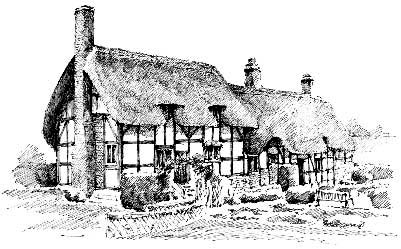


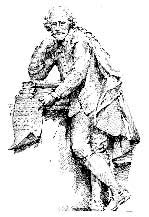
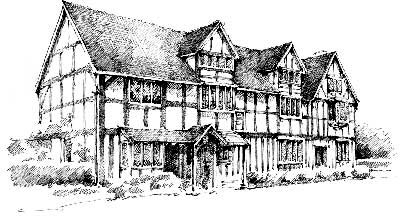
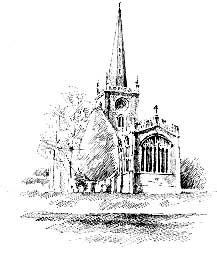
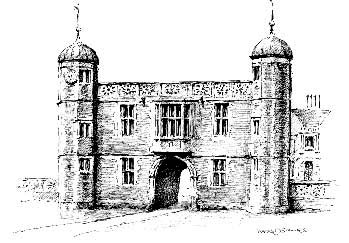


 knew this
knew this 